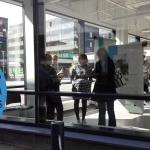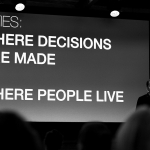The first Livable City Forum was organized in Turku and Helsinki on 8–10 June 2016. The Forum started in Turku on 8 June with the Turku Campus Challenge organized by the University of Turku. The Turku Campus Challenge was an intensive innovation camp that was based on the idea that in limited time, teams are able to present a concept or solution into the challenge of the day.
There were six teams that were ready-mixed to make sure that people in teams were from different countries and with a different background. There were in total 33 participants from Estonia, Finland, Latvia and Sweden. The teams were led by oriented team leaders. Five of them were local higher ed students or newly graduated, and one of them were working closely with international students in Turku.
The challenge of the day was: ”How can we create a next generation ”Student House” (later S.H.) that would be open for all the higher ed students in Turku? What formal and informal student activities there could be, and how they would be operated?” The topic was chosen based on the feedback that was gathered from the higher ed campus of Turku in May 2016.
Challenge in depth
The morning session dealt with opening up the challenge deeper. The teams raised among others these questions:
Location: What is the local context and connection, and on the opposite, could the S.H. be a concepted network and distributed overseas? Where in Turku should the S.H. be located, and could we reuse already existing buildings? Would it be only in one location or in many?
Design process: What is the unifying theme? What makes the building or place unique, and yet include functional flexibility, future changes and resilience? How is the desired identity created? What kind of a process it would be? How to create local public places to different areas? How could we make use of the different competences of the six universities or universities of applied sciences in town? How should external stakeholders be involved in the S.H.?
Urban functions: How can the S.H. contribute to combating social segregation and language barriers, revitalization of the area, and urban innovation? How can we make the S.H. an innovative and multifunctional platform with versatile activities and open to all (hours, design, non-exlusionary)?
Team solutions
The afternoon was spent by ideating and concepting solutions into the more spesific challenge defined by the teams themselves. All teams presented their concept for the S.H. in the end of the camp day to all the participants. The final concepts were shortly as following:
– Participatory design process to define the location, stakeholders and content development – not necessary only one house
– Student House 2.0. – A multi-storey and multi-functional house, different functions in different floors
– Hi-tech Indoor Forest – connecting natural and technical elements in an innovative way
– Reuse an existing ”problem building” to create a multifunctional S.H.
– Not a physical house, but an awareness raising campaign related to resources and opportunities that international students hold
– Student Boat – A new landmark and a cool venue.
Summation
The experience was thanked for by many participants. One indicator of success was the fact that all the teams could follow the programme and present their solution into the given challenge. The ideated concepts brought some locally really cool and fitting solutions like the Student Boat. During the event, a lot of other useful content for the pilot was generated too.
The realisation of the camp worked fine, but it could have implemented in a more informal and fun way. There could have been more interactivity and exchange with other teams, and also more interactivity with social media channels and locals. The student team leaders were thanked for by many participants after the camp. They also had a great role in telling about the context and students’ point of view during the camp.
By Johanna Aaltonen & Tiina Anttila, University of Turku, Turku pilot of Live Baltic Campus









